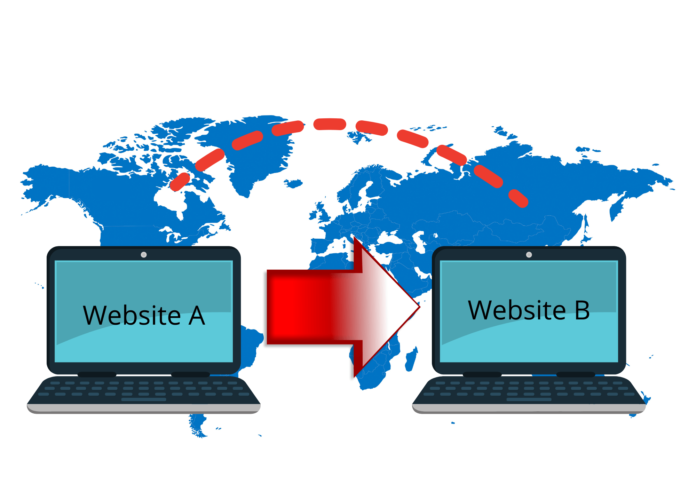Website migration can be a nerve-wracking endeavor, akin to moving to a new home. But fear not, for with careful planning and execution, this transition can be as smooth as butter on a hot skillet. Whether you’re upgrading your platform, changing your domain, or revamping your website’s structure, mastering the art of website migration is essential to ensure your online presence remains strong and uninterrupted. In this guide, we’ll take you through seven vital steps that will help you achieve a flawless website migration, so you can make this digital leap with confidence.
1. Introduction
Navigating the Digital Landscape
Think of your website as a ship navigating the vast digital ocean. As your brand evolves, so must your online presence. Website migration is the compass that guides your ship to new horizons, but without proper navigation, you risk running aground. Fear not, for with this comprehensive guide, you’ll be well-equipped to conquer the challenges of website migration.
2. Understanding Website Migration
Embracing Change and Growth
Much like a butterfly emerges from its cocoon, your website too must evolve to thrive. Embracing change is the first step in this transformative journey. A website migration is not just about relocating files; it’s about adapting to evolving user behaviors and technological advancements.
The Need for Website Migration
Why migrate? Imagine your website as a house – over time, it might need renovations or even a new address. The same goes for your digital home. New designs, improved functionalities, and better user experiences necessitate migration. It’s a strategic move to stay relevant in the ever-changing digital landscape.
3. Preparation Phase of Website Migration
Defining Migration Goals
Before you set sail, chart your course. What are your migration goals? Is it a design overhaul or a platform shift? Defining clear goals will help you measure the success of your migration and stay on track.
Assembling Your Dream Team
Just as an orchestra needs skilled musicians, your migration process requires a team of experts. Web developers, designers, SEO specialists – assemble a dream team to ensure a harmonious migration symphony.
Backing Up Your Existing Website
Like packing your belongings before a move, backing up your website is crucial. It’s your safety net. If anything goes awry during migration, you’ll have your data intact, ensuring a smooth recovery.
4. SEO Strategy
Auditing Your Current SEO
SEO is the wind in your website’s sails. Before migration, conduct a comprehensive SEO audit. Understand your current keywords, rankings, and traffic patterns. This baseline data will be your reference point for success.
Establishing SEO Goals for Website Migration
What good is a ship without a destination? Set clear SEO goals for your migration. Do you want to maintain your SEO rankings, or are you aiming for an upward surge? Define your success metrics.
Crafting a 301 Redirect Map
In the digital realm, a 301 redirect is your GPS, guiding users and search engines to your new location. Craft a meticulous redirect map to ensure users land on the right page and search engines retain your SEO juice.
5. Content Migration
Evaluating and Categorizing Content
Not everything in your old house needs to move with you. Similarly, assess your content. Identify high-performing content to prioritize migration. Categorize and organize it for a seamless transition.
Ensuring Content Integrity
During the move, fragile items require extra care. Your content is no different. Ensure that images, videos, and text maintain their integrity. A glitch-free migration preserves your brand’s credibility.
Optimizing Content for the New Platform
Think of your content as adaptable furniture. When you move to a new place, you arrange it to fit. Similarly, optimize your content for the new platform’s dimensions, whether it’s desktop, mobile, or both.
6. Testing and Quality Assurance
Trial Run: Testing the Migration
You wouldn’t invite guests to an unfinished house. Likewise, conduct a trial run of the migration. Test every link, form, and functionality. It’s your dress rehearsal before the grand unveiling.
Squashing Bugs and Glitches
Bugs are the unwanted guests of a migration party. Thoroughly scan for broken links, missing images, or any other glitches. A polished website reflects your dedication to a seamless user experience.
7. Go-Live and Post-Migration
The Grand Unveil
The curtains rise, the spotlight shines – it’s time to go live. But launching is not the end; it’s a new beginning. Ensure your team is on standby to address any last-minute hiccups.
Monitoring Traffic and Performance
Just as you’d inspect every nook of a new house, monitor your website’s traffic and performance post-migration. Track SEO rankings, user engagement, and loading speeds to ensure a successful transition.
Addressing Post-Migration Issues
Hiccups happen, even in the smoothest of transitions. Monitor user feedback and analytics. If you encounter any issues, address them promptly. Flexibility and responsiveness are key.
8. Conclusion
Navigating the seas of website migration may seem daunting, but armed with these seven vital steps, you’re poised for success. Embrace change, plan meticulously, and execute flawlessly. Your digital voyage will lead to a new and improved online haven, where your brand flourishes and your users thrive.



